Table of Contents
ToggleHigh-income earners often find themselves in a unique pickle when tax season rolls around. With great earnings comes great responsibility—and a hefty tax bill that can feel like a punch in the gut. But fear not! There are clever tax-saving strategies that can turn that frown upside down and keep more of that hard-earned cash in your pocket.
Understanding Tax Obligations for High-Income Earners
High-income earners encounter unique tax obligations that necessitate careful navigation. Understanding these obligations plays a crucial role in effective tax management.
The Importance of Tax Planning
Tax planning serves as a vital tool for high-income earners. Proactive strategies help minimize tax liabilities, enabling individuals to keep more of their earnings. A comprehensive tax plan allows for more than just compliance; it opens avenues for deductions, credits and exemptions specific to high-income brackets. Consulting with tax professionals can enhance the planning process, ensuring all available options are utilized efficiently. Strategic planning leads to better financial outcomes.
Common Tax Challenges Faced
High-income earners often face various tax challenges. A significant issue involves navigating complicated tax codes that can lead to confusion and misfiled returns. Many encounter the Alternative Minimum Tax, which restricts the ability to claim certain deductions. Additionally, high-income earners frequently deal with capital gains taxes, which can significantly impact investment returns. Employment-related taxes also contribute to higher overall tax burden. Effectively addressing these challenges requires consistent monitoring and expert guidance.
Effective Tax Saving Strategies for High-Income Earners

High-income earners can find effective tax saving strategies to keep more of their hard-earned money. Implementing specific tactics can significantly reduce their tax liabilities.
Maximizing Retirement Contributions
Maximizing contributions to retirement accounts effectively decreases taxable income. High-income earners can contribute up to $22,500 to a 401(k) in 2023. Individuals aged 50 and older qualify for an additional catch-up contribution of $7,500. This strategy not only lowers taxable income but also boosts retirement savings. Contributing to a Traditional IRA also benefits tax planning for these earners. Individuals should consider their income limits when utilizing these accounts.
Utilizing Tax-Advantaged Accounts
Utilizing tax-advantaged accounts further aids in managing tax burdens. Options include Health Savings Accounts (HSAs) and Flexible Spending Accounts (FSAs). HSAs allow contributions with pretax dollars, up to $3,850 for individuals. Families can contribute up to $7,750. Withdrawals for qualified medical expenses remain tax-free. FSAs offer similar benefits but with annual contribution limits of $3,050 in 2023. These accounts provide a dual benefit of tax savings and health expense management.
Exploring Health Savings Accounts (HSAs)
Exploring Health Savings Accounts presents a strategic avenue for tax savings. HSAs allow individuals to save for medical expenses with triple tax advantages. Contributions are tax-deductible, growth is tax-free, and withdrawals for qualified expenses incur no taxes. High-income earners benefit from increased contribution limits, up to $7,750 for families. Remaining funds roll over annually, effectively creating a retirement account for healthcare. Additionally, HSAs can serve as long-term savings for future healthcare needs.
Leveraging Deductions and Credits
High-income earners can significantly reduce their tax liabilities by strategically leveraging deductions and credits. Understanding the distinction between itemizing deductions and claiming the standard deduction proves essential.
Itemizing vs. Standard Deductions
Itemizing deductions allows individuals to claim specific expenses like mortgage interest, property taxes, and charitable contributions. Many high-income earners find itemizing beneficial, particularly when eligible expenses surpass the standard deduction amount, which for 2023 is $13,850 for single filers and $27,700 for married couples filing jointly. Each taxpayer must evaluate their situation annually to determine the optimal strategy. Claims for medical expenses that exceed a percentage of AGI can also boost itemization benefits. Ultimately, careful analysis ensures maximum tax savings.
Tax Credits Available for High-Income Earners
High-income earners access several tax credits that can lower their overall tax liability. Notable examples include the Lifetime Learning Credit and the American Opportunity Tax Credit for education expenses. The Foreign Tax Credit provides relief for those earning income abroad, safeguarding against double taxation. Those participating in energy-efficient home programs may qualify for credits, reducing costs while promoting sustainability. Each credit has specific eligibility requirements, so diligent review of personal financial situations ensures individuals capitalize on available options. Leveraging credits effectively can strengthen overall tax strategies for high-income earners.
Investing for Tax Efficiency
Investing for tax efficiency significantly impacts how high-income earners manage their financial portfolios. Strategic investment choices can help minimize tax burdens while maximizing returns.
Tax-Deferred Investment Options
Tax-deferred accounts like Traditional IRAs and 401(k)s provide excellent opportunities for high-income earners. Contributions to these accounts lower taxable income, allowing funds to grow without immediate tax implications. Depending on individual tax situations, they can postpone tax liabilities until retirement. Additionally, capital gains and dividends enjoy tax deferral, enhancing long-term investment growth. Exploring options within these accounts, such as mutual funds and target-date funds, further increases potential tax savings.
The Role of Tax Loss Harvesting
Tax loss harvesting serves as an invaluable strategy. Investors can offset capital gains by selling underperforming securities, effectively reducing taxable income. Utilizing this method, high-income earners can mitigate the financial impact of market fluctuations. Timing plays a crucial role; the strategy can be particularly beneficial during market downturns. Engaging with a tax professional can optimize this approach, ensuring compliance with tax regulations while maximizing benefits. This proactive management style leads to enhanced tax efficiency over time.
High-income earners can significantly benefit from implementing strategic tax-saving measures. By maximizing contributions to retirement accounts and utilizing tax-advantaged options like HSAs and FSAs, they can effectively lower their taxable income.
Leveraging available deductions and credits is crucial in minimizing tax liabilities. Additionally, making informed investment choices enhances tax efficiency and can lead to substantial savings over time.
Engaging with tax professionals ensures that high-income earners navigate complex tax codes and optimize their financial strategies. With careful planning and proactive management, retaining more earnings becomes an achievable goal.




